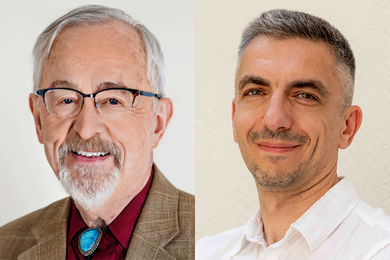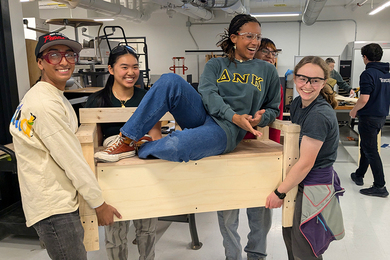Angelika Amon, the Linda and Howard Stern Career Development Associate Professor of Biology, is the 2003 recipient of the National Science Foundation's Waterman Award, given annually to a young researcher who receives NSF funding. She will receive $500,000 over three years.
She is the third member of the MIT faculty to win the award. Previous winners were Associate Professor Vahid Tarokh of electrical engineering and computer science in 2001 and Professor Christopher C. (Kit) Cummins of chemistry in 1998.
Amon, a researcher at the Center for Cancer Research (CCR) and an associate investigator of the Howard Hughes Medical Institute, seeks to decipher the regulatory networks within the cell that ensure accurate duplication and segregation of genetic material during cell division. This information is vital to understanding normal cell division and the abnormal cell division that leads to cancer.
Using the budding yeast Saccharomyces cerevisiae as a model (it turns out that the molecules involved in cell division in yeast and humans are very similar), Amon combines genetic and biochemical techniques to determine how the various cell cycle transitions are regulated.
While cell division has long been understood on a basic level, nobody knows how individual molecules control the transitions that take place throughout the cell cycle. "We are particularly interested in the chromosome segregation part--how cells make sure that this happens in an accurate manner," she said.
While oncogenes and genomic instability play critical roles in cells turning cancerous, tumors that grow out of control also somehow acquire extra chromosomes. "The main way to gain chromosomes is when they don't partition correctly. The normal cell has surveillance mechanisms and checkpoints that detect and fix such errors, but in cancer cells the checkpoints are gone," Amon said.
Because these surveillance mechanisms also operate in yeast, scientists can use yeast genetics to identify the genes responsible. Knowledge of the genetic underpinnings of this process could be a very powerful tool, and in this way, "we can start unraveling this basic cell mechanism," Amon said.
Amon received undergraduate and graduate degrees from the University of Vienna. She did postdoctoral work with Ruth Lehmann in the Whitehead Institute and was appointed a Whitehead Fellow in 1996. Amon became an assistant professor of biology in the CCR and the Department of Biology in January 1999.
Established by Congress in 1975, the Alan T. Waterman Award marked the 25th anniversary of the NSF and honors its first director.
A version of this article appeared in MIT Tech Talk on April 2, 2003.





